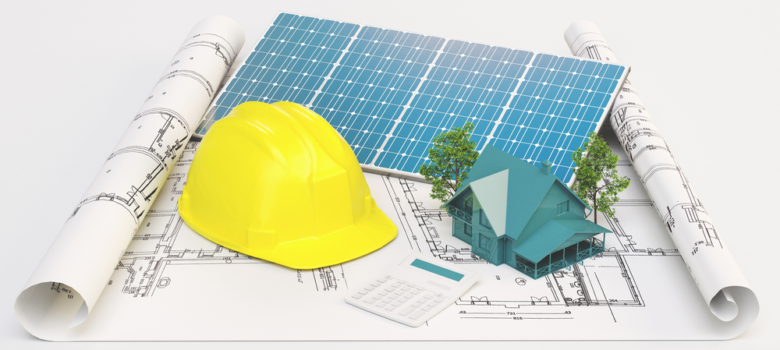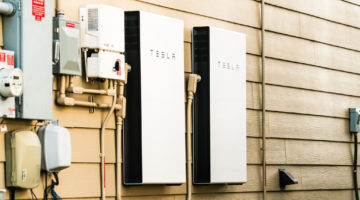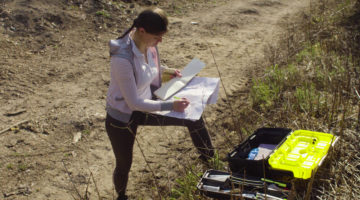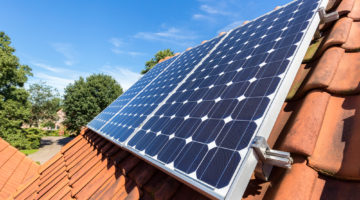
REGULATIONS
Regulations: Planning Permission
The good news is that here in the UK there is no requirement for planning permission for solar panels. The government is keen for people to install them so the regulations are left intentionally lenient. There are some restrictions though.
RESTRICTIONS
- Panels can’t be installed above the highest part of the roof (excluding the chimney)
- They can’t stick out more than 20 cm from the roof (although it would be pretty unusual if they did)
- The panels are supposed to be placed so as not to have too big of an impact on the building. The actual regs for this are pretty vague and not particularly stringent – it’s not as if you can actually hide a solar panel (yet). The intention though is to prevent people from whacking huge solar system up and completely obliterating any architectural and aesthetic integrity.
- If you no longer have any use for your panels or they’ve broken and you’re choosing not to replace them, you’re required to take them down in a timely manner. In reality this is not a rule that’s very heavily enforced, but it’s still on the list of requirements.
- Scotland has some additional rules regarding solar panels on exterior walls, blocks or flats, and flat roofed buildings
LISTED BUILDINGS AND WORLD HERITAGE SITES
- The panels must not be installed on a building that is within the grounds of a listed building or on a site designated as a scheduled monument.
- If your property is in a conservation area, or in a World Heritage Site, panels must not be fitted to a wall which fronts a highway.
STAND ALONE PANELS
- Stand alone panels are subject to the same requirements for minimum impact placement and removal
- While the first installation can put up without permission, any subsequent systems are subject to planning permission
- There’s a size restriction of 9m2 for any standalone arrays
- No part of the installation can be above 4 metres – if two of your friends are standing on your shoulders and not able to reach the top then it’s too high
- To qualify as a standalone solar system the panels have to be at least 5 metres from the property
- Stand alone’s can’t be installed within the boundary of listed buildings or scheduled monuments
- In conservation areas and World Heritage Sites no part of the solar installation should be nearer to any highway bounding the house than the part of the house that is nearest to that highway. I had to read that sentence about 5 times before I understood it – essentially your panels can’t be closer to a road than any part of your property.
Regulations: Building Regs
ROOF
The load-bearing abilities of the roof have to be checked and proven. If it’s deemed not to be strong enough then you might have to get some additional work done to ensure that it’s safe – no one wants to be killed by a falling solar panel.
MICROGENERATION CERTIFICATION SCHEME
Building regulation disputes can be a huge pain in the neck and drag on seemingly forever, so we strongly advise using an installer registered and certified by the Microgeneration Certification Scheme (MCS). You can find a full list of these trusted installers here, or by filling out the contact form below.
Regulations: Feed-In Tariff
Unless you’re running a commercial or enormous solar system, you fall into the FIT category of ‘small installations’ – the average domestic PV these days is around 4kW, you’d have to have more than 12 times that power to qualify as a large installation.
To qualify for the scheme, the most important pieces of paper you’ll need are a Microgeneration Certification Scheme (MCS) certification and an Energy Performance Certificate (EPC) rated D or above. The MCS certificate proves that your system was fitted by an approved installer, while the EPC proves the energy efficiency of the house. For older buildings, achieving an EPC of at least a D may require some home improvements.
COST
Installation Cost: Size
The two dictating factors for the initial cost of the panels are size and quality. A larger system means more electricity produced, which in the long term will make a bigger impact on your bills and provide more surplus electricity for the feed-in tariff (see below). The average solar PV system installed in the UK now is 3.5KW, which – working at 90% efficiency – will produce approximately 3150kWh of electricity (depending how much sun you get in your part of the country). As reference, an average house uses approximately 4,800kWh. However, the initial cost of a bigger system is, well, bigger. Even if you win the lottery, you may still be constrained by the amount of roof space you have available. To make the most of smaller systems it’s necessary to use high efficiency cells.
Installation Cost: Quality
You could be forgiven for thinking that you’d already made your choice of solar panel by going with PV over thermal. Au contraire, there is so much more to it. There are three main types of PV panels, each with different associated costs and efficiencies.
Monocrystalline Solar Cells: The most expensive of the PV options, these solar cells are developed from single crystals grown in isolation and can reach an efficiency of 22%.
Polycrystalline Solar Cells: Made from multiple interlocking silicon crystals grown together, polycrystalline cells are cheaper to produce than monocrystalline but their efficiency is much lower at around 13-17%.
Amorphous Solar Cells: A bargain compared to the above, amorphous solar cells are a surprisingly popular option in the UK, despite their 9% efficiency level. This is down to their ability to continue operating and producing energy even in low-light.
HIT Solar Cells: I know I know, I said there were three types and now here I am throwing in a fourth, but HIT solar systems are actually a hybrid of amorphous and monocrystalline cells. HIT stands for Heterojunction with Intrinsic Thin Layer, which is not exactly a user-friendly sort of name, but they are very high performing panels. They have a significantly higher efficiency rating that any of the other panels, though you’re more likely to find them in sunnier places where they operate best.
We know this all sounds a little bit overwhelming so we’ve put it on a friendly chart for you.
| Type of Panel |
Amorphous |
Polycrystalline |
Monocrystalline |
| Cost |
£5,500 |
£6,250 |
£7,000 |
| Efficiency of Panel |
9% |
15% |
20% |
| Output (kWh) |
3200 |
3500 |
3700 |
| Feed-in Tariff (£) |
399 |
436 |
461 |
| Savings on electricity bill (£) |
200 |
219 |
231 |
| 50% electricity exported (£) |
65 |
80 |
90 |
| Annual Return (£) |
664 |
735 |
782 |
Installation Cost: Labour
Different suppliers vary in their installation service charges. The most important rule with installation is to ensure that the suppliers are MCS-accredited to qualify for the Feed-in Tariff.
FEED-IN TARIFF
How much money can solar panels make me?
On top of the savings made by producing your own energy and drastically cutting your bills, solar PV is also eligible for the Feed In Tariff.
The Feed in Tariff is a government programme designed to promote the uptake of small-scale renewable and low-carbon electricity generation technologies. In the 8 years it’s been running it’s undergone a few changes, primarily based on the fluctuations of the energy market, but the concept remains the same; participating electricity suppliers are required to make payments on the generation and exportation of energy by qualifying installations. The payments which you receive are tax-free and last for 20 years.
The tariff is split into 2 sections – generation and export. Export is set at 5.03p/kWh for solar PV, but the generation rates change every few months. At the time of writing, the majority of domestic users will be generating electricity at a Feed-In Tariff rate of 4.01p/kWh. For a 4kWp system of high performance monocrystalline panels on a south-facing roof in southwest London (the home of the GreenAge), we’d be looking at a total annual Feed In Tariff of £227.27 in the first year.
MAINTENANCE
Maintenance: Monitoring your Solar Panels
The best way to keep your solar panels at top efficiency is to stay on top of their health. Although they are designed to handle a vast array of weathers and conditions, external factors do play a roll. As the seasons change so do the flora and fauna of Britain, so bear in mind what each time of year brings. If you have tall trees around your property then Autumn could mean a build up of leaves on the the panels blocking their sunlight, while summer pollen is also a potential performance inhibitor.
Possibly the biggest problem for solar panels, however, are shadows. This is because solar panels are connected into ‘strings’ – if even one cell in a string is blocked, the output of the other panels in the string drops sharply. If some shading is inevitable, you can cheat this to a certain extent by arranging modules so that shadows will affect one whole string if possible, rather than the end cell of multiple strings. If your panels are even slightly shaded by large trees or nearby buildings, they will not work as effectively. Keep an eye on close trees and how their shadows fall, and be aware of new buildings that may block the light.
Maintenance: Cleaning your Panels
Solar panels are pretty good at using natural rainfall to keep themselves free of heavy soiling, but in the same way that your windows still manage to collect grime from pollen, pollution and all forms of nature, so do your panels. To ensure that they operate to their optimum capacity it’s best to get them cleaned a few times a year. There are several options when it comes to cleaning solar panels:
- Use a solar panel cleaning company. This is certainly the easiest method, but perhaps the costliest. Simply search on the internet for a local window cleaner who offers the service to professionally clean your panels. They should use the appropriate cleaning products and tools to get your panels back up to 100%.
- HeliotexTM offer an automatic solar panel cleaning system that automatically washes and rinses your solar panels. This system attaches water nozzles to your solar panels, and houses a 20 litre store of soap concentrate, which is administered to the panels when required. The HeliotexTM system tends to be for large solar installations to make it cost effective.
- You can also buy a nano-coating that can be applied to the panels, much like polishing a car. When solar panels are treated with the nano-coating, its hydrophobic properties repel water and dirt as it comes into contact with the panels. Nanoshell and Smart shield both supply this material in the UK.
Of course there’s always the option to do it yourself. If you choose that route then be sure that you have safe access to the panels, and be extremely conscious of your choice of materials. It’s not like scrubbing a floor clean, harsh chemical and abrasive equipment are a big no-no. Simple dish soap and a cloth or soft bristled brush will do just fine. Use a squeegee to dry the panel and prevent a residue.
Maintenance: Checking your Usage
While the above are both important, they’re not exactly the way I want to spend my Sunday afternoons unless I need to. That’s why I’m a fan of our last solar maintenance tip – install a monitoring system to keep a running log of your panels performance and show you when there’s something wrong. This way you’re not wasting time or money cleaning a perfectly functioning panel or chopping down your favourite tree.
Monitoring systems allow you to identify when and often where there is a problem with your solar panels if they ever stop working. While the installation and monthly fees can put many people off, if you’re someone that likes to be entirely in control of their environment then a monitoring system can’t be beaten.
MOVING HOUSE
Moving: Can I Take my Solar PV Panels With Me When I Move?
Theoretically yes. As long as your own it there’s nothing to stop you removing it and reinstalling it at another location. Perhaps a better question is should it be done?
PV systems tend to be tailored specifically to fit the dimensions and orientation of your house. Moving them to a new location would mean retrofitting the system on to a property they simply weren’t designed for, meaning that they’d be much less efficient. Labour costs alone would be prohibitively expensive, not to mention the cost of repairing the roof where the panels had originally been fitted. Removal, moving costs, and reinstallation doesn’t come cheap.
These factors lead most people to put the property on the market with the panels included, allowing estate agents to advertise the ecological credentials and charge a higher price to potential buyers. The benefits of solar PV are plentiful and they can be an attractive addition for buyers, adding significant value to the property and potentially allowing you to recoup the cost of new panels at your new home.
Moving: How Much Would it Cost to Move my Solar PV Panels?
It’s difficult to give an exact figure due to the scope for great variation dependent on a large number of factors, but most estimates put the cost at somewhere between £100 and £300. This would put the cost of moving a 25kW installation between £2,500 and £7,500. Some estimates have been higher, particularly for smaller systems which wouldn’t benefit from the economies of scale.
As a percentage of the original installation costs these projections put the price of moving a system between 20% to 60%, though again some experts have quoted significantly higher. This is a large contributing factor as to why most people choose to simply include the solar PV as a fixture of the house they’re selling and set up a new installation in their new property. A new system also has the financial benefit of eligibility for the Feed-in Tariff scheme.
Moving: What Would Happen to my Feed-in Tariff?
The Feed-in Tariff (FiT) is a government subsidy scheme launched following the Energy Act 2008, to allow growth in electricity generation from green microgeneration technologies, (which if unsubsidised are otherwise more expensive than the current solutions). The FiT scheme provides a subsidy to any household or businesses that generates its own renewable electricity and is funded by a small increase in people’s energy bills. Payments are based on your meter readings and paid by your energy supplier. The subsidy is an enabler for small scale renewable and low-carbon technologies to compete against the traditional fossil fuel forms of electricity generation. The tariff payments depend when you get the renewable technology installed and, in the case of solar PV, the payment amount is also dependent on the EPC rating of the home where the installation is due to take place. Until 2015, the Feed-in Tariff meant that solar PV systems could pay for themselves within only a couple of years, and any payments claimed after that were profit. This is no longer the case, as rates have dropped considerably, but the system still provides a great financial incentive for PV.
When a property is sold the FiT payments are transferred to the new owners. If you choose to remove the solar PV from your home and move it to an alternative location you will disqualify yourself from the feed-in tariff. Moving the PV gives it the status of a second hand system and as such is no longer eligible for the scheme.
The exception to this is large, powerful PV systems, the kind generally used by businesses. From summer 2019, medium and large building-mounted solar PV systems will be allowed to be moved between buildings without the loss of Feed-in Tariff (FIT) payments. This will be restricted to those that exceed 50 kWp. The system can be moved to a new location and still receive FiT payments, provided that the site uses at least 10% of the electricity generated.
Yes, it is theoretically possible to move your solar panels, but it probably wouldn’t be worth your while. The costs will be huge; unless you have an enormous system, you’ll no longer be eligible for Feed-in Tariff payments. Plus, your solar PV system probably won’t work as efficiently even when it is moved. Our advice is to consider the PV as part of the house and say goodbye to it when you decide to sell. New house, new PV, new adventure!
Think we missed something? Do you have a different opinion?
Comment below to get your voice heard…












interesting stuff!! How long do solar panels generally last?
Hi Tom,
The average lifespan of a modern solar panel is around 20-25 years, though the inverter may need replacing before that timeframe.
Many thanks,
Harriet
thanks for the solar buying guide! been thinking about getting solar pv! so much on this wesbite!